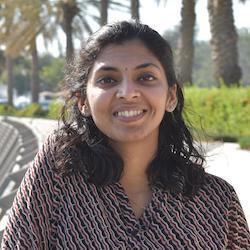Emergence of tissue boundaries through extracellular matrix remodelling in early avian embryos
Lakshmi Balasubramaniam, Postdoctoral Fellow, University of Cambridge, UK

Tissue spreading (epiboly) couples gastrulation to shape the initial body plan of early vertebrate embryos. How these two large-scale collective cell movements cooperate remains unclear. Here, we examine the cell mechanics and tissue dynamics underlying epiboly during chicken embryo morphogenesis. We find that cells at the blastoderm edge undergo a wetting-like process to spread on the vitelline membrane through stiffness sensing and cytoskeleton remodelling. This interaction is robust to edge cell loss and cooperates with cell-proliferation-based blastoderm growth to drive epiboly.
Surprisingly, epiboly remodels the extracellular matrix (ECM) to establish a basal lamina and maintain cell-cell connections. Impairing either edge cell wetting or the ECM causes tissue thickening and buckling in the epiblast, disrupting gastrulation movements. These findings suggest a general logic of mechanical coupling between distinctly controlled tissue movements during early vertebrate development. In the second part, I will briefly discuss the other roles of this extraembryonic tissue in maintaining nutritional needs of the growing embryo and how mechanical forces might be at play during this process.
